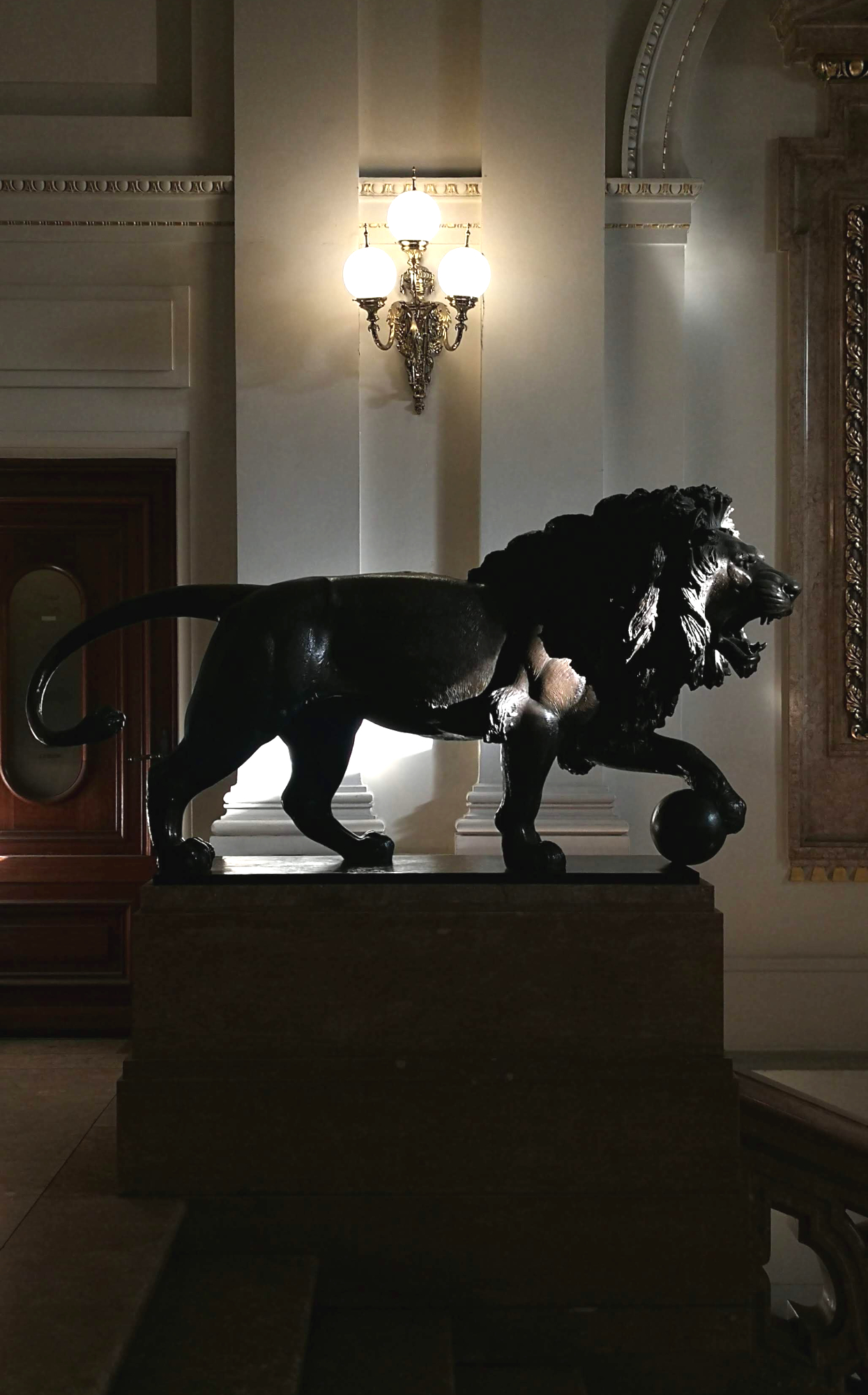Národní 1009/3: Czech Academy of Sciences
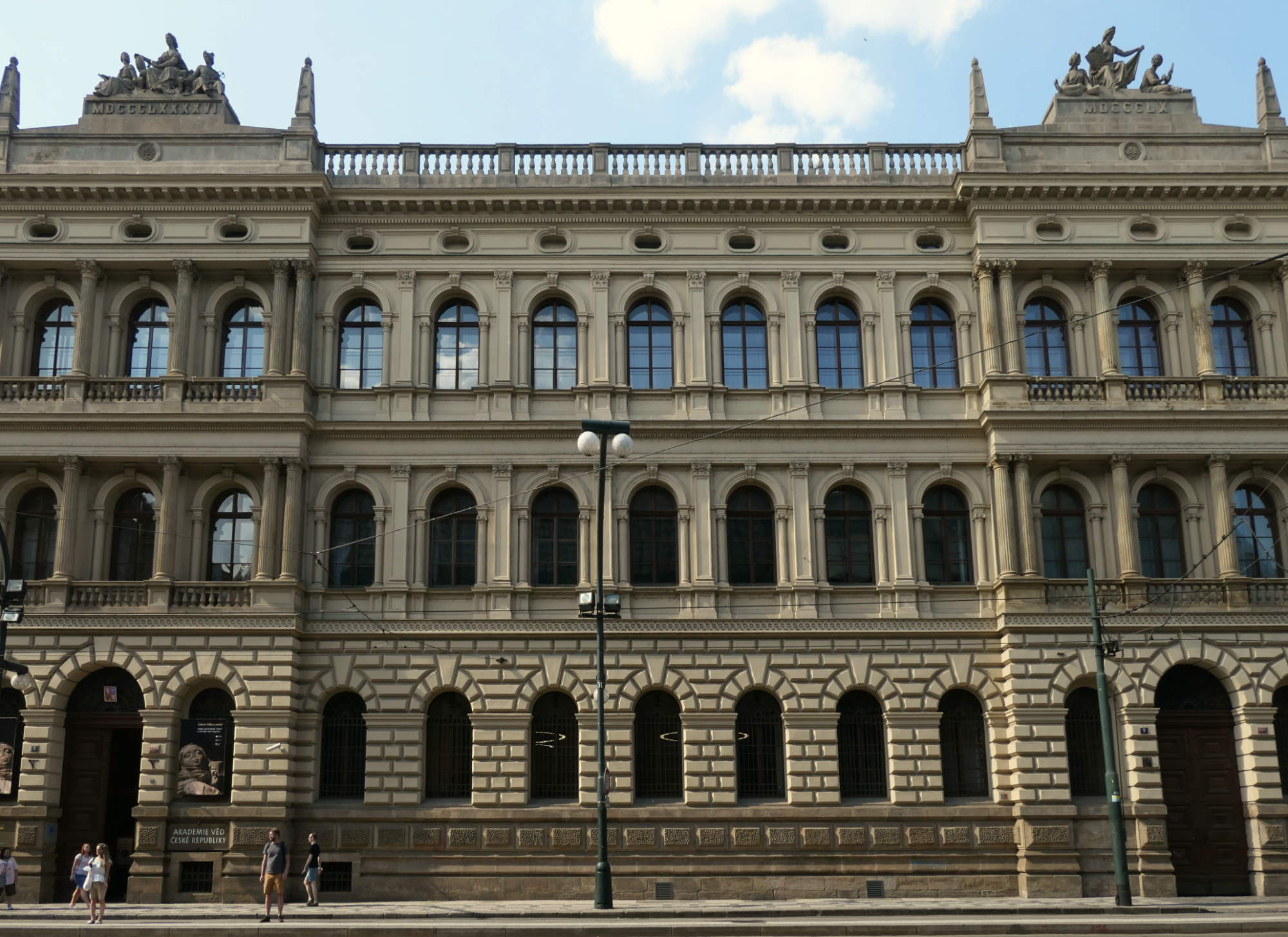
Of all the work of Vojtěch Ignác Ullmann, perhaps the most outstanding is the building that today houses the Czech Academy of Sciences (Akademie věd). Ullmann’s grand neo-renaissance plan saw off competition from a large number of other well-known Czech and Austrian architects – many of whom, like Ullmann, had learnt their craft in Vienna. Among his rivals for this commission was his former professor at the Academy of Fine Arts, Eduard van der Nüll, whose greatest achievement was the historicist buildings of the Ringstrasse.
Originally the headquarters of the Czech Savings Bank (Česká spořitelna), the building’s modern concrete foundations were laid in 1858 under the supervision of master builder Quido Bělský, and it was completed two years later. The facade’s upper storeys, balustrade and obelisks are borrowings from Sansovino’ s 1530 masterpiece, the Biblioteca Marciana in Venice.
In the following three years, Ullmann designed two neighbouring works of equal significance: the Lažanský Palace, home to the famous Cafe Slavia, and the Provisional National Theatre, later to be incorporated into the National Theatre. From the east end of the nearby Bridge of Legions, the view is entirely dominated by these three examples of Ullmann’s work.
The expansion of Prague (the population doubled from 100,000 to 200,000 in the last three decades of the 19th century) meant that the bank soon outgrew its premises, and the building consequently doubled in size, with a mirror-image extension by Friedrich Schachner completed in 1896. The years are recorded in the attic groups, the first of which, pictured below, is an allegory by Otto Mentzel entitled ‘Bohemia Accepts the Savings of the People’, based on a drawing by Josef Mánes:
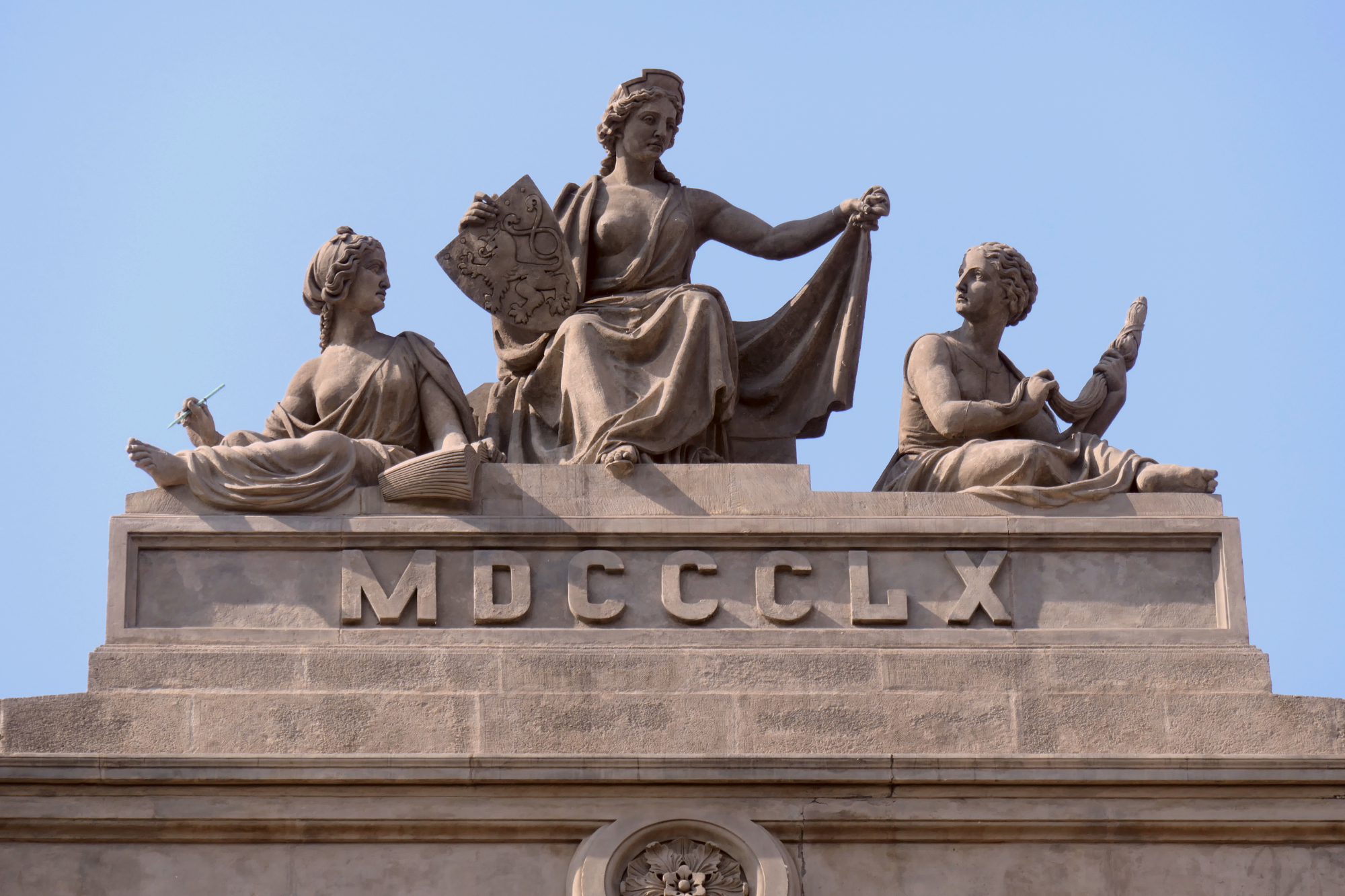
The extension allowed the interior spaces to be re-developed. The centrepiece was a stupendous two-storey atrium with glazed ceiling, dominated by the allegorical pair ‘Thrift’ and ‘Frugality’, sculpted in white Carrara marble by Rafaello Cellai, from drawings by the celebrated Josef Myslbek. Today this former banking hall acts as the reading room of the Academy of Sciences.
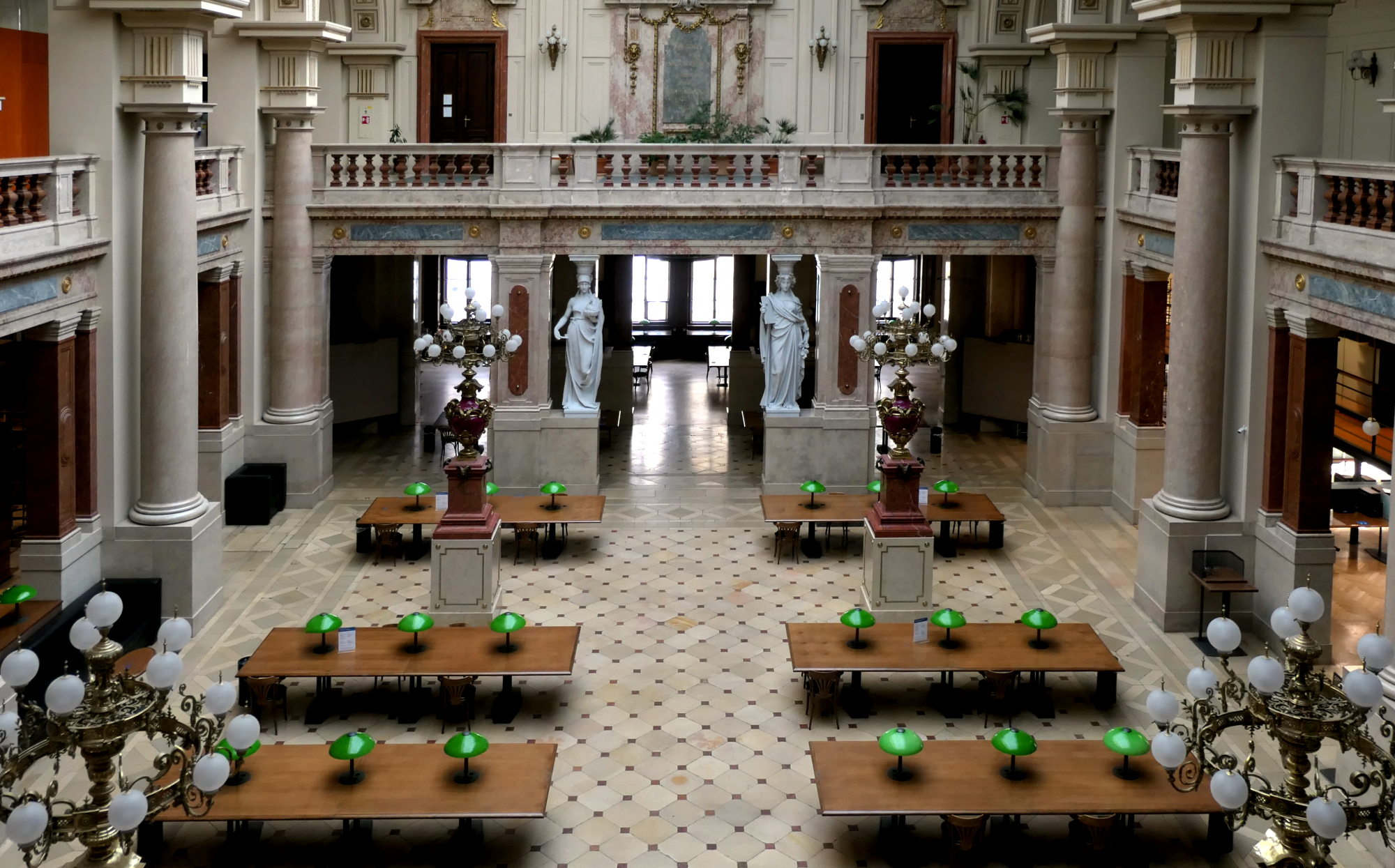
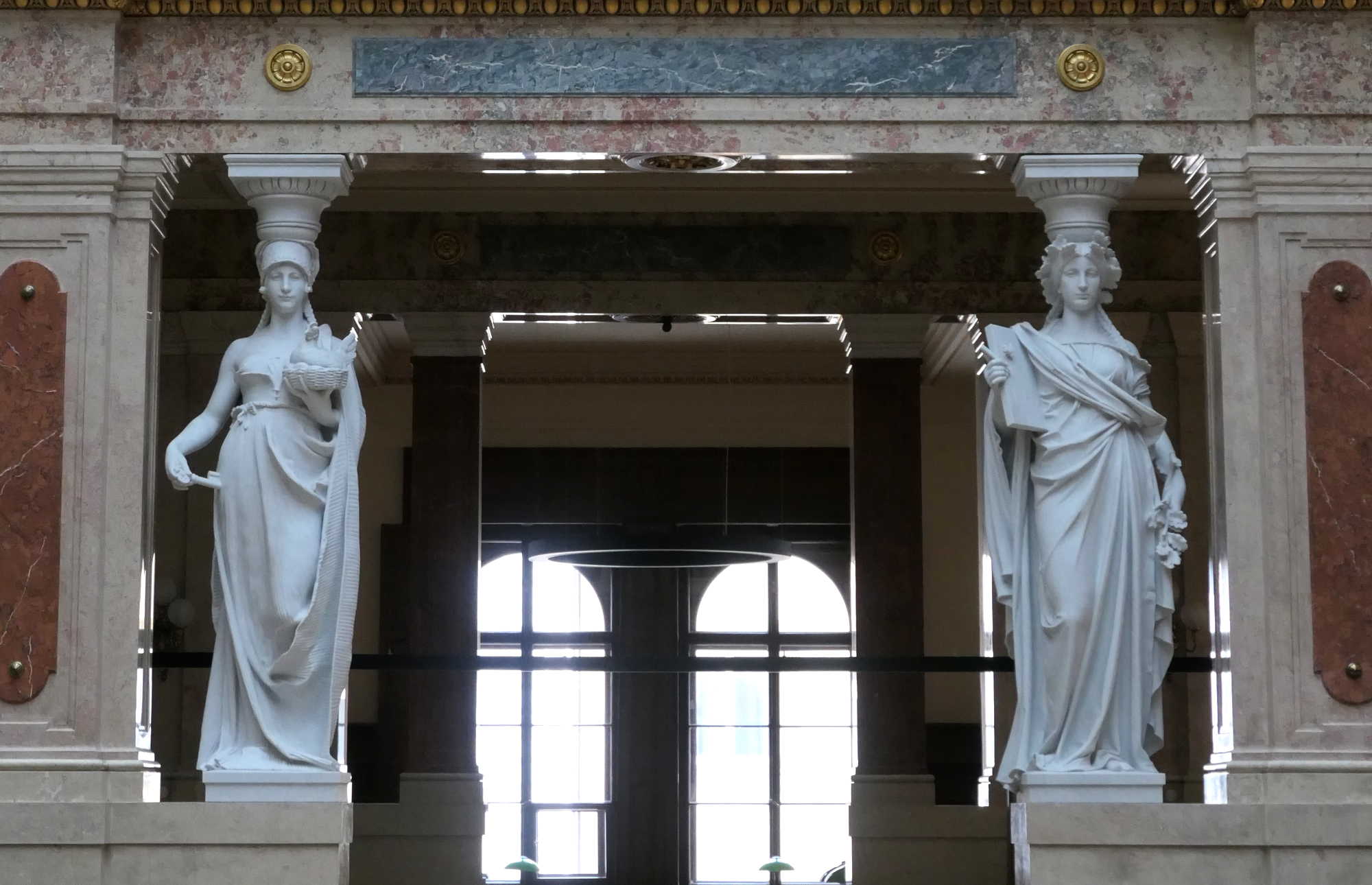
Frugality (left) bearing a key and a laying hen, and Thrift (right) with an oak leaf and a ledger.
The reading room is accessed from street level by a magnificent marble staircase guarded by a pair of life-size lions cast in bronze by Conrad Hochmann, again from designs by Myslbek and his pupils:
